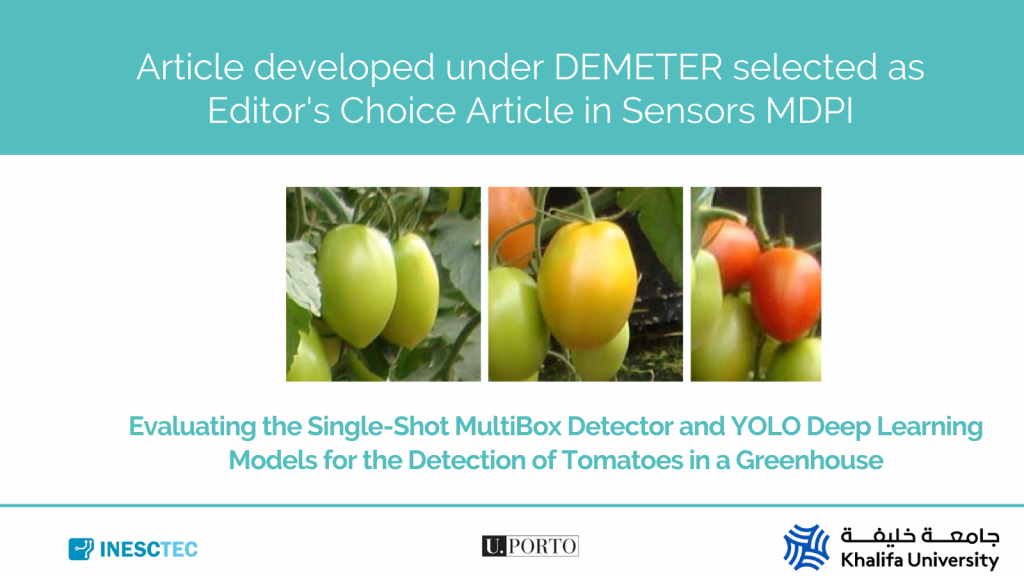
The article “Evaluating the Single-Shot MultiBox Detector and YOLO Deep Learning Models for the Detection of Tomatoes in a Greenhouse”, developed under H2020 DEMETER has been selected as an “Editor’s Choice Article” in Sensors MDPI .
The article was authored by Sandro Augusto Magalhães (INESC TEC and University of Porto), Luís Castro (INESC TEC and University of Porto), Germano Moreira (University of Porto), Filipe Neves dos Santos (INESC TEC), Mário Cunha (INESC TEC and University of Porto), Jorge Dias (Khalifa University Center for Autonomous Robotic Systems) and António Paulo Moreira (INESC TEC and University of Porto).
The abstract reads:
The development of robotic solutions for agriculture requires advanced perception capabilities that can work reliably in any crop stage. For example, to automatise the tomato harvesting process in greenhouses, the visual perception system needs to detect the tomato in any life cycle stage (flower to the ripe tomato). The state-of-the-art for visual tomato detection focuses mainly on ripe tomato, which has a distinctive colour from the background. This paper contributes with an annotated visual dataset of green and reddish tomatoes. This kind of dataset is uncommon and not available for research purposes. This will enable further developments in edge artificial intelligence for in situ and in real-time visual tomato detection required for the development of harvesting robots. Considering this dataset, five deep learning models were selected, trained and benchmarked to detect green and reddish tomatoes grown in greenhouses. Considering our robotic platform specifications, only the Single-Shot MultiBox Detector (SSD) and YOLO architectures were considered. The results proved that the system can detect green and reddish tomatoes, even those occluded by leaves. SSD MobileNet v2 had the best performance when compared against SSD Inception v2, SSD ResNet 50, SSD ResNet 101 and YOLOv4 Tiny, reaching an F1-score of 66.15%, an mAP of 51.46% and an inference time of 16.44ms with the NVIDIA Turing Architecture platform, an NVIDIA Tesla T4, with 12 GB. YOLOv4 Tiny also had impressive results, mainly concerning inferring times of about 5 ms.
Read the full paper here.


